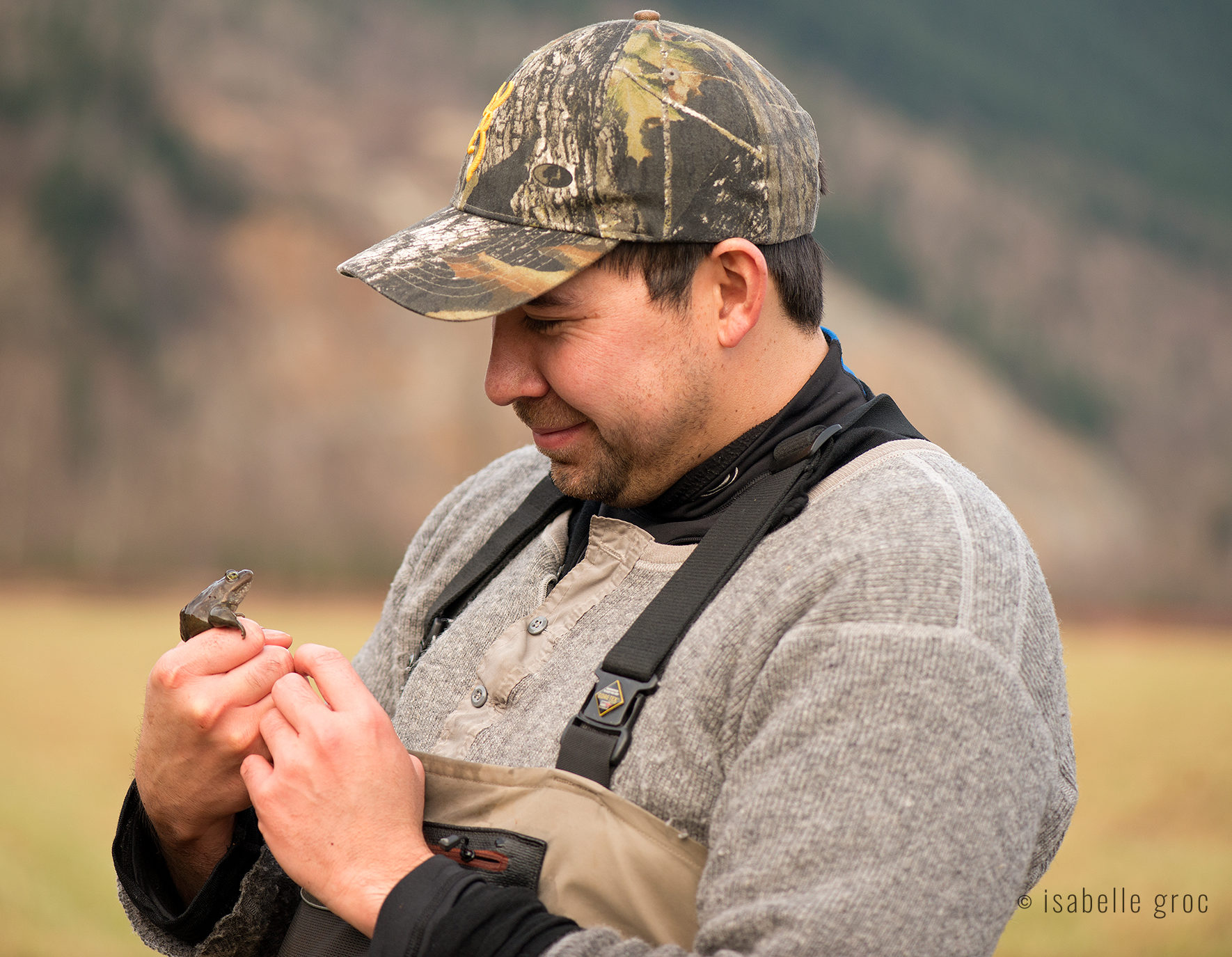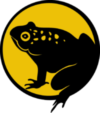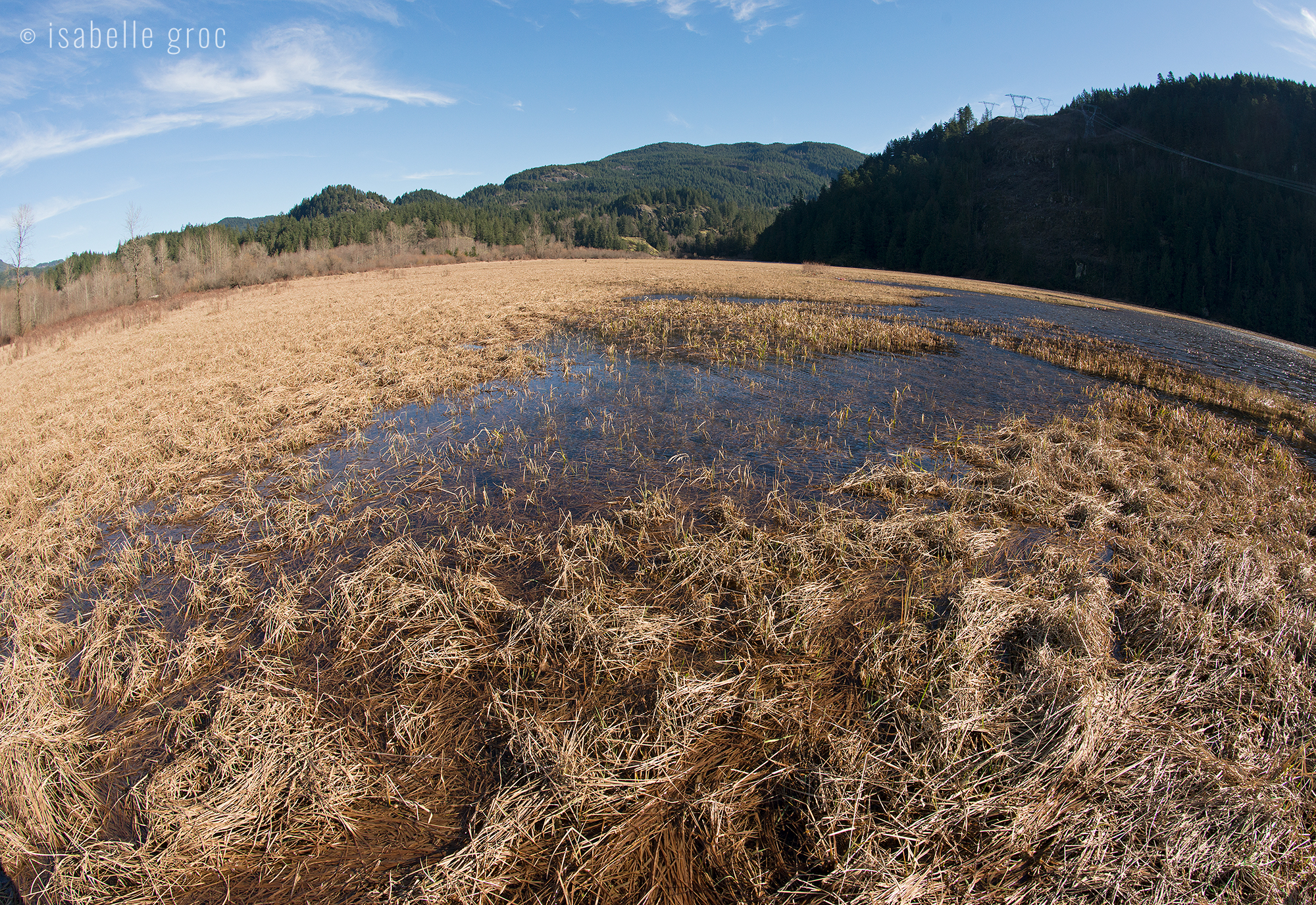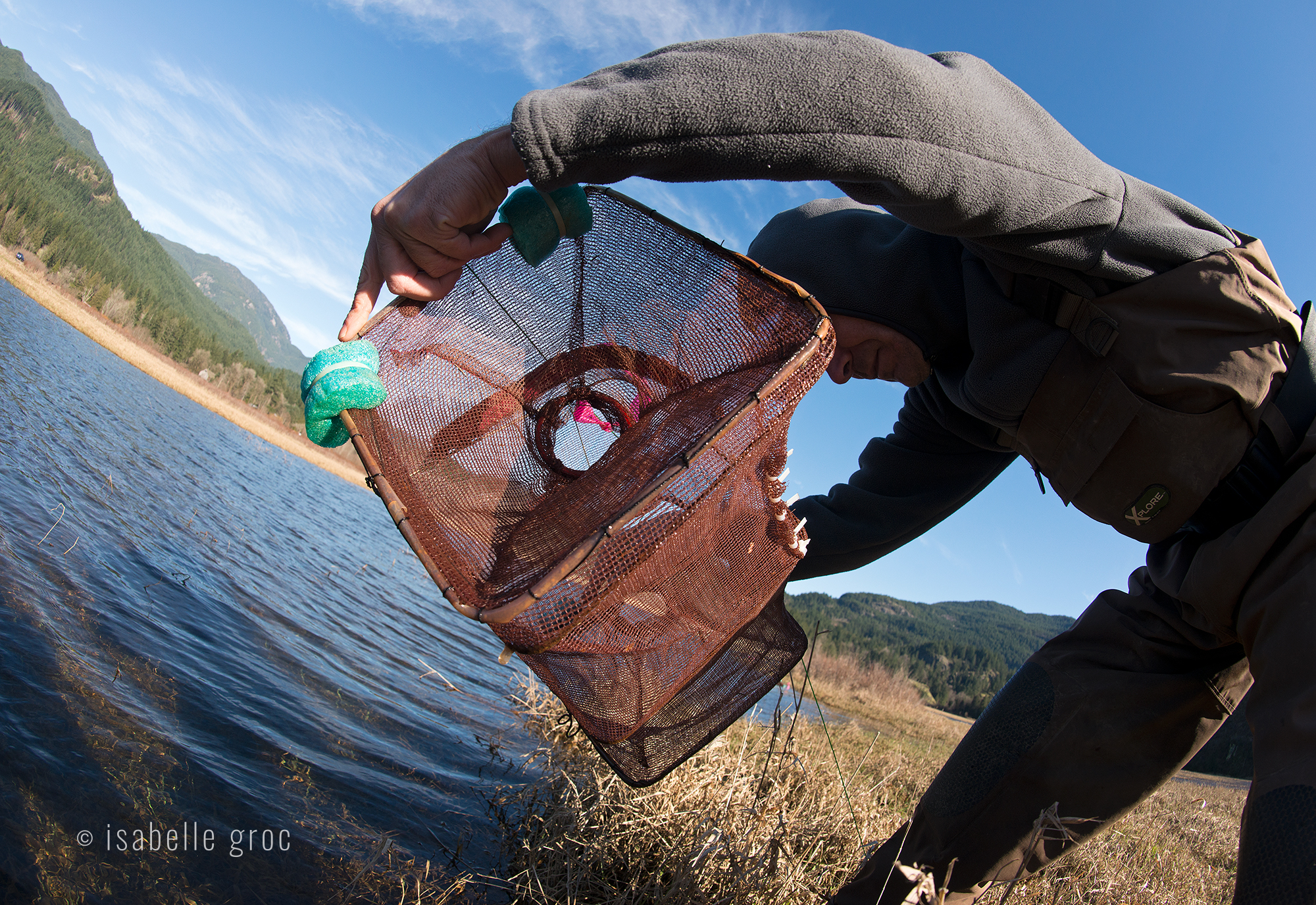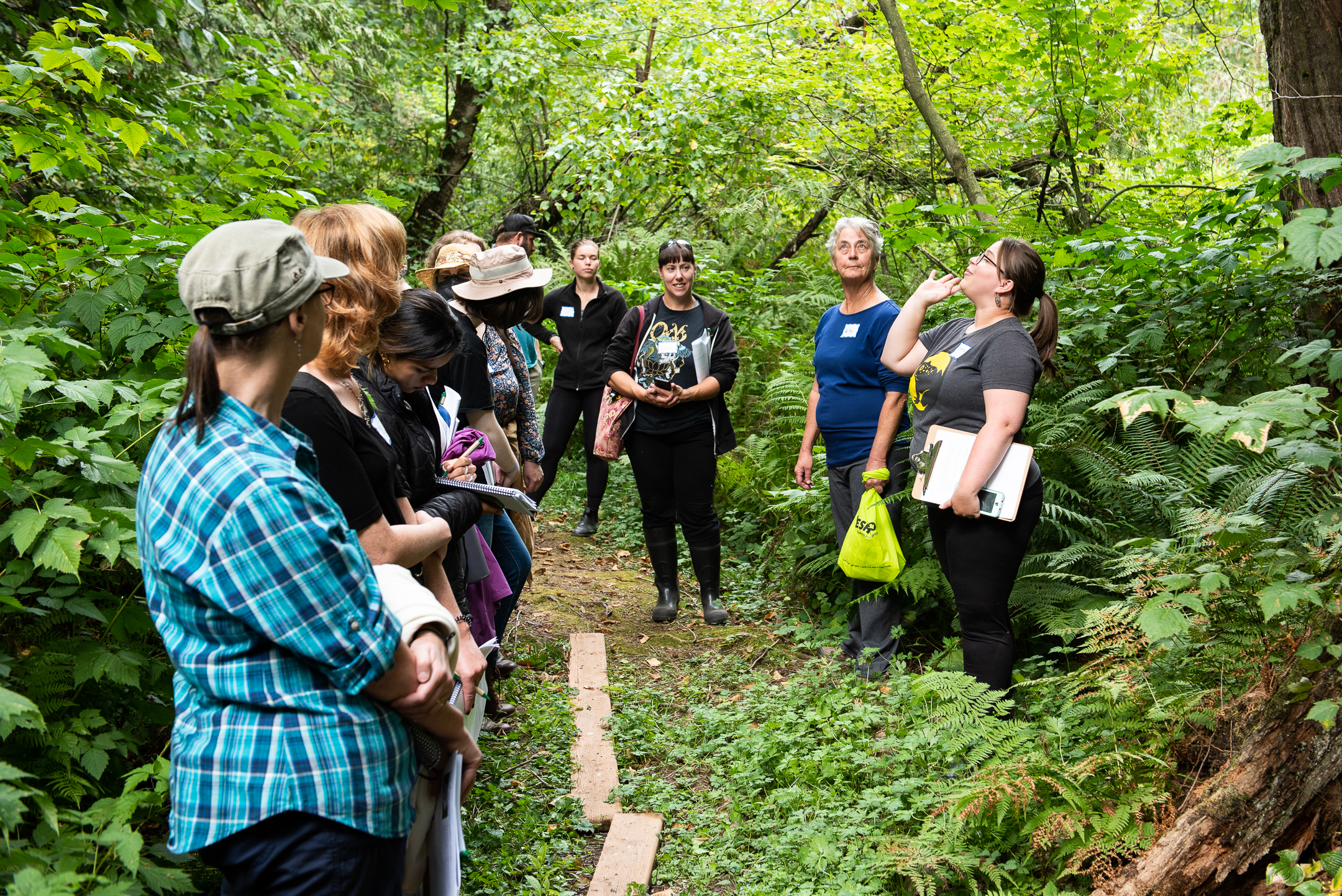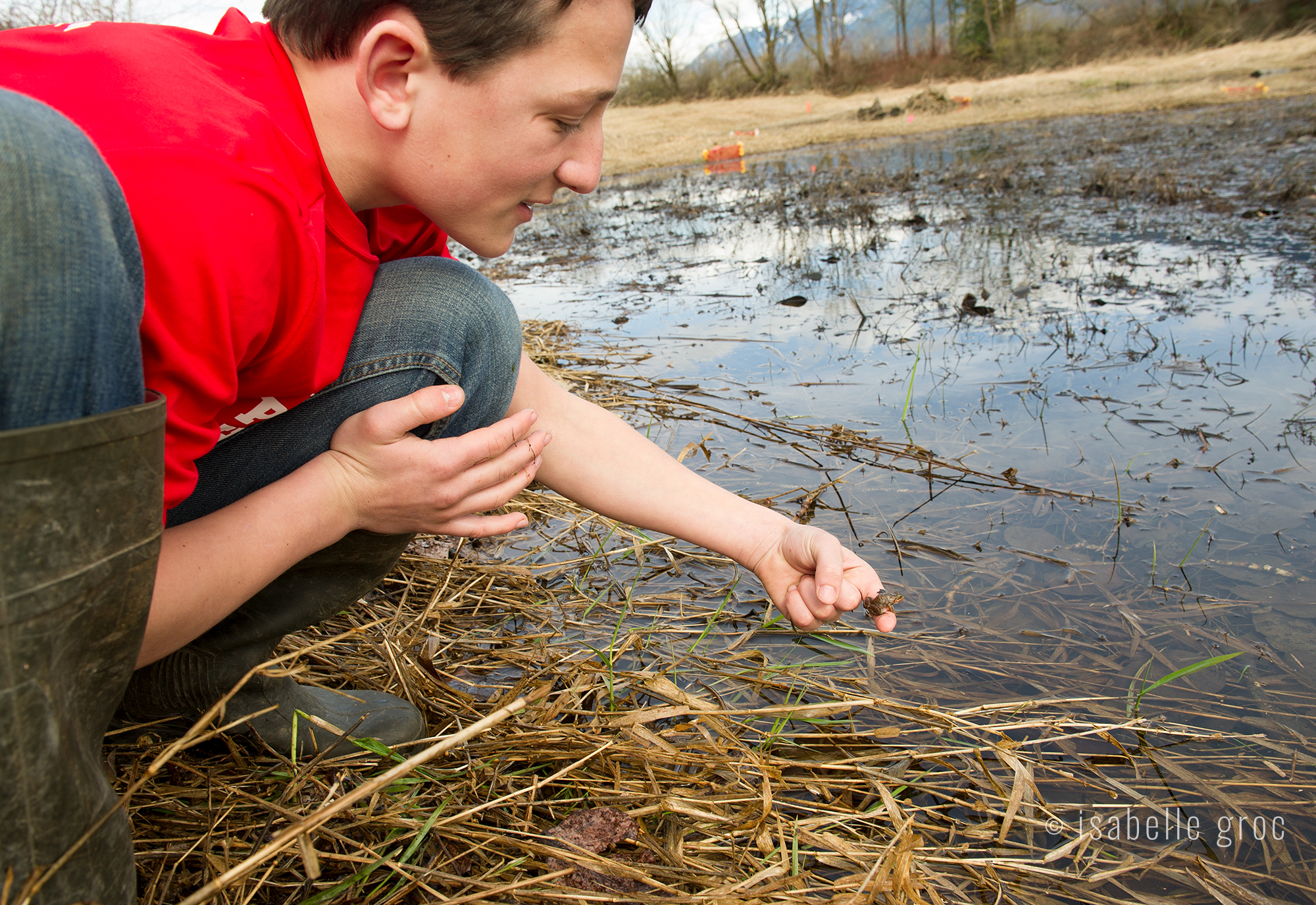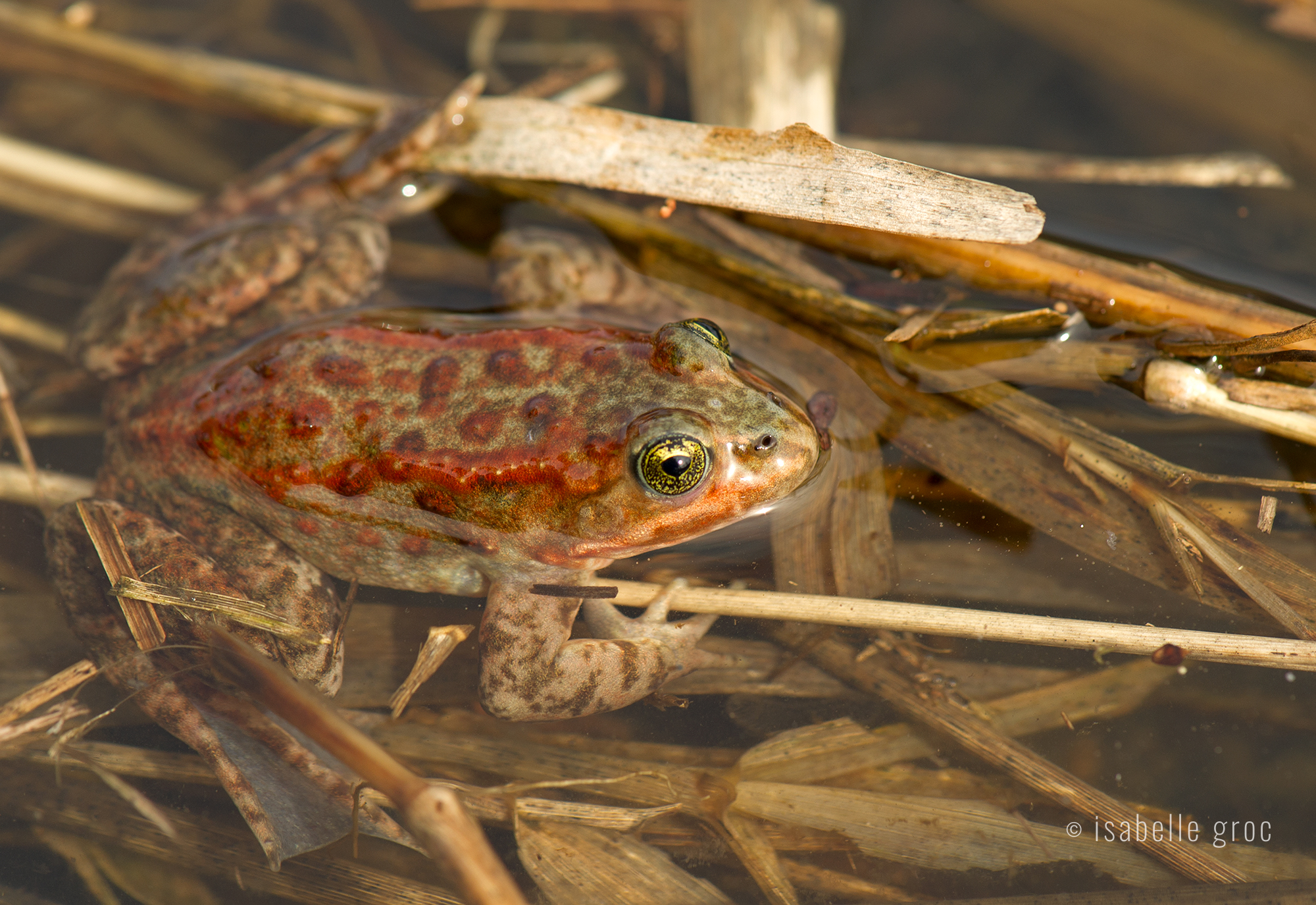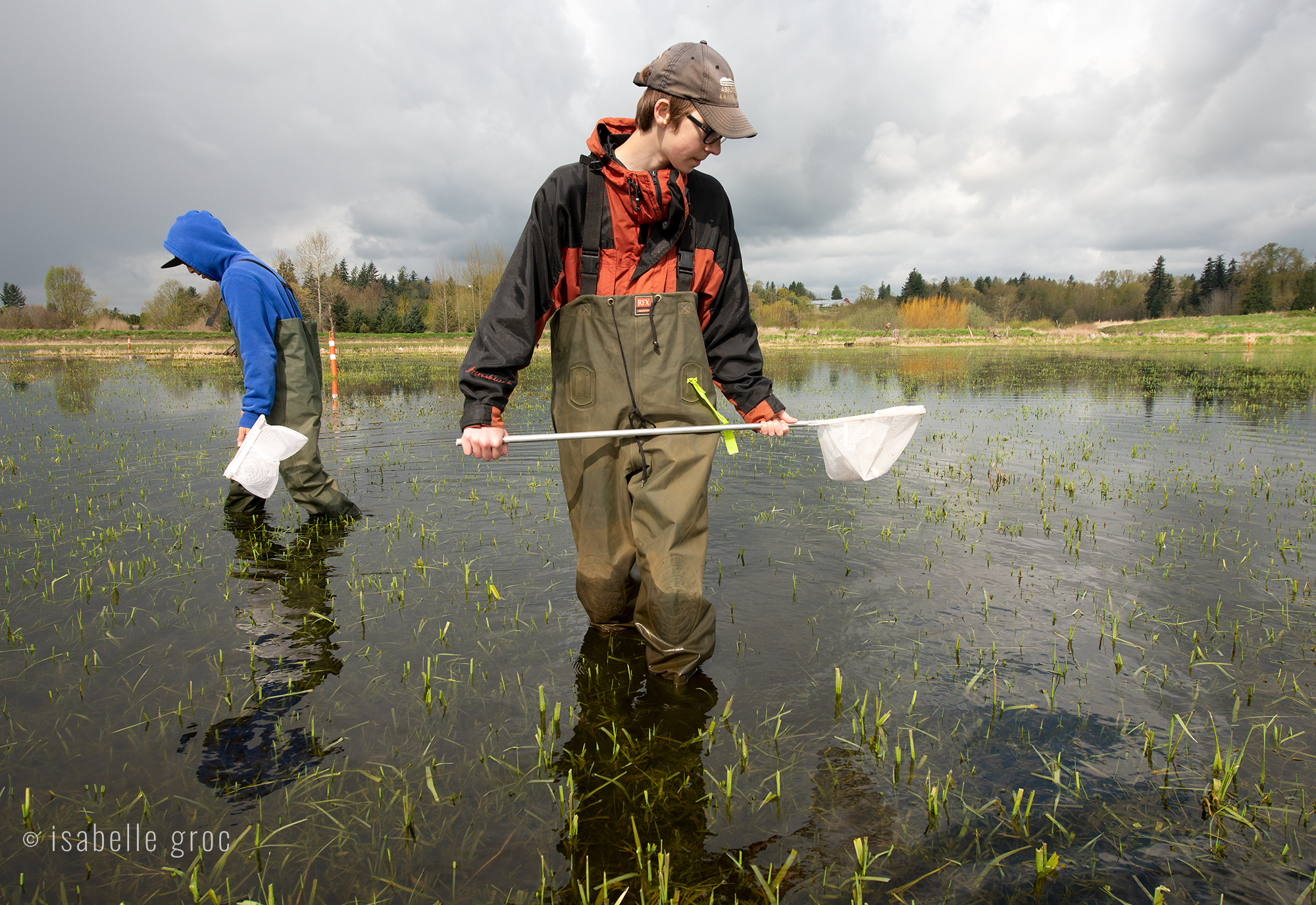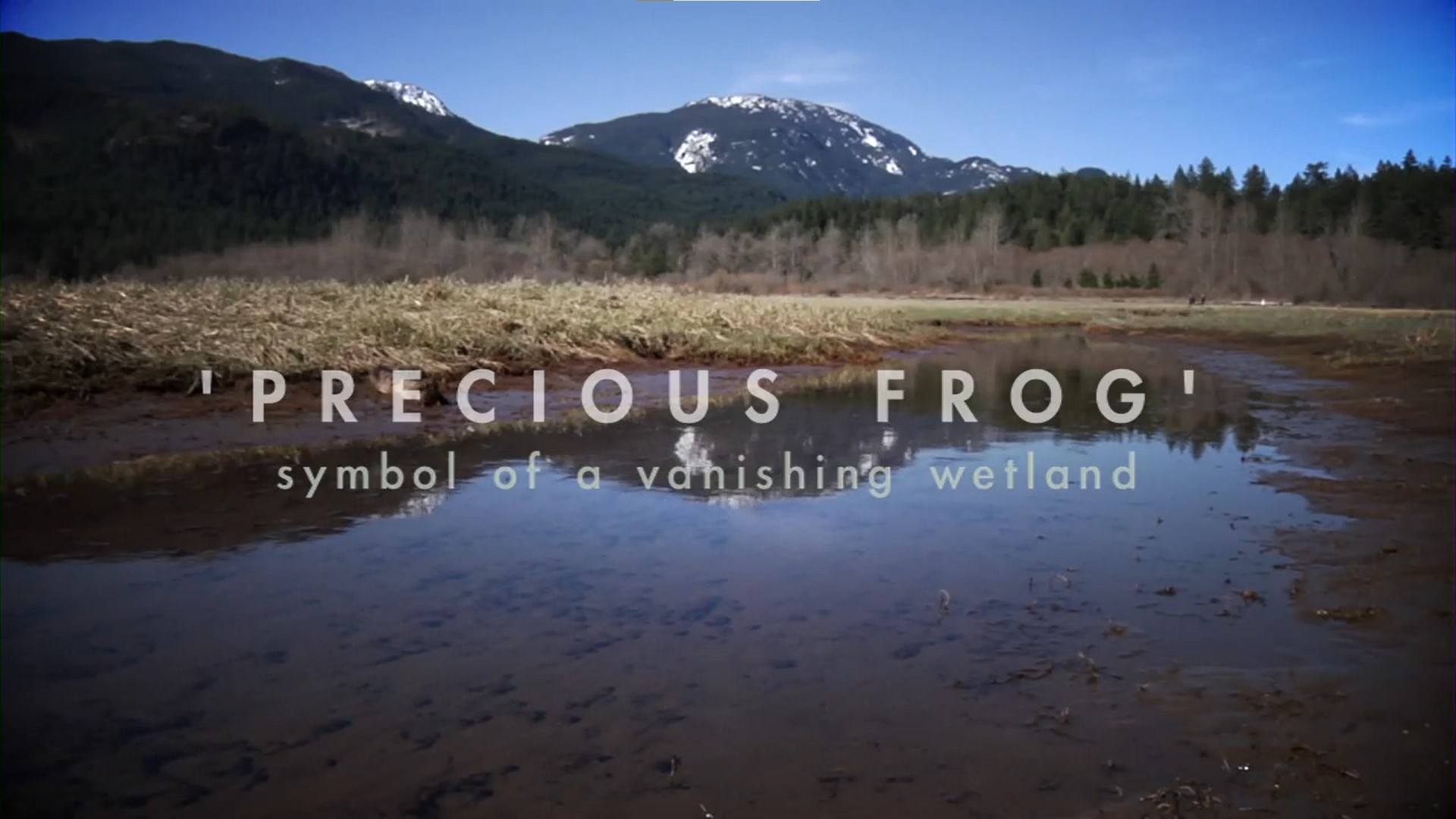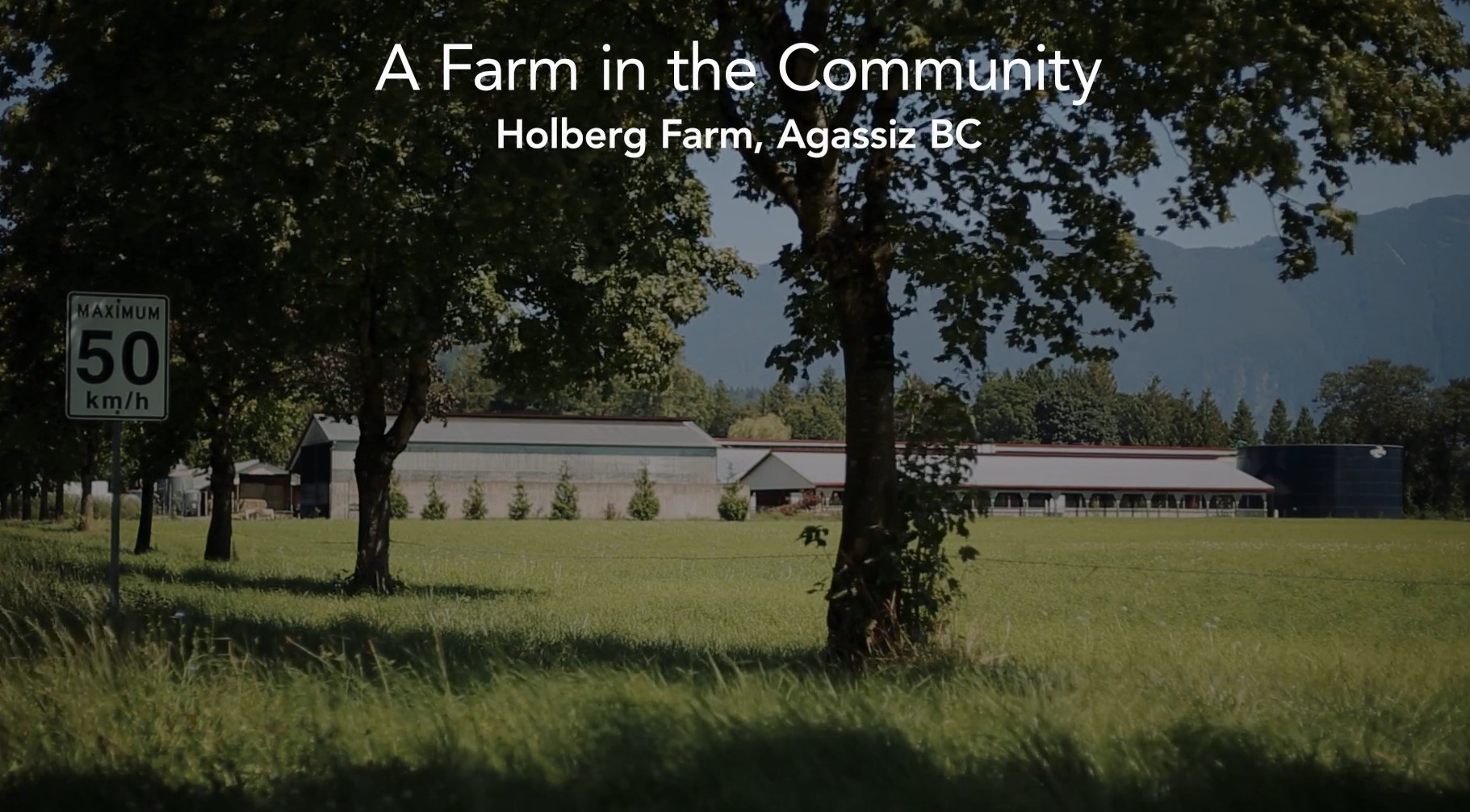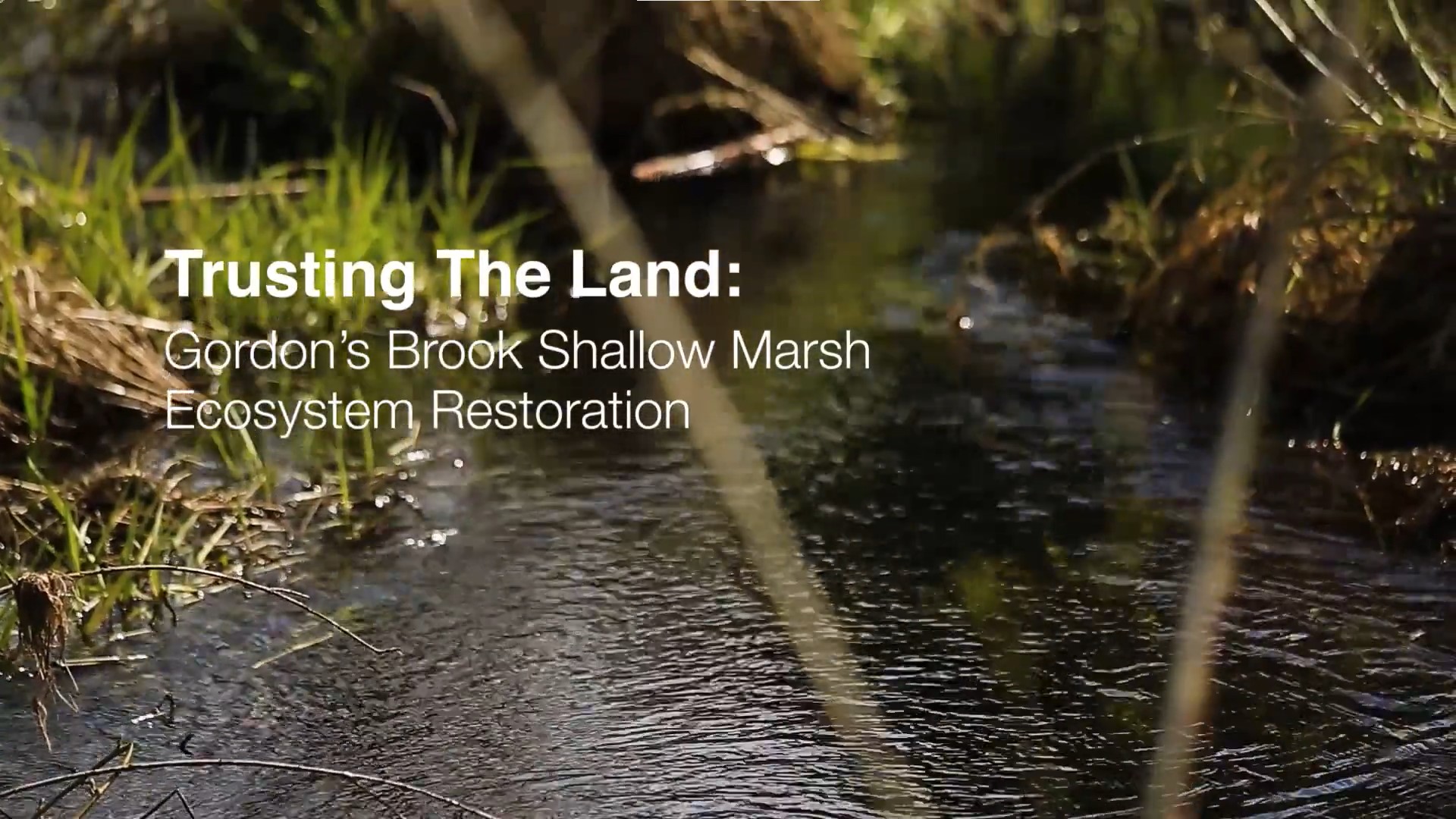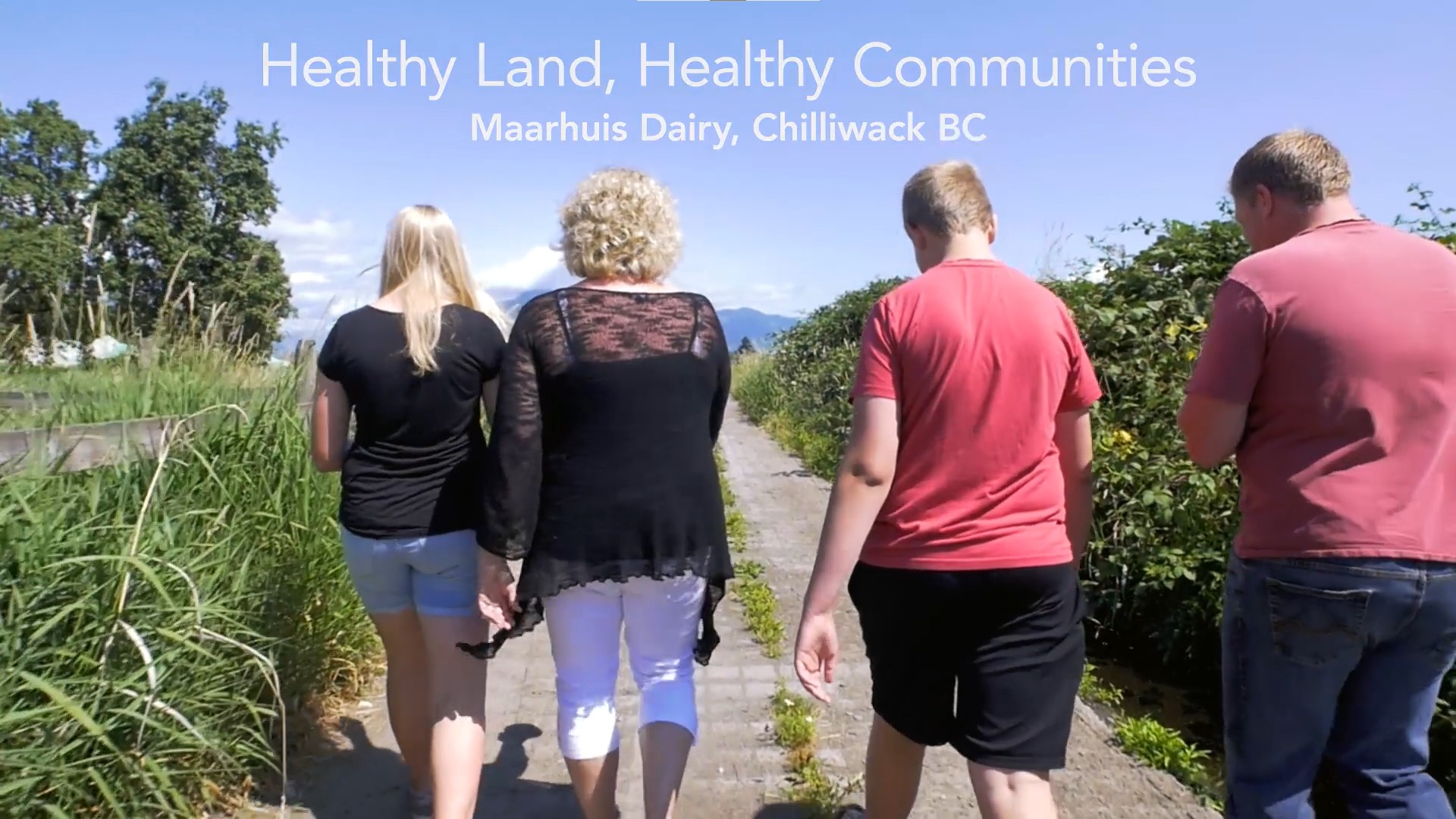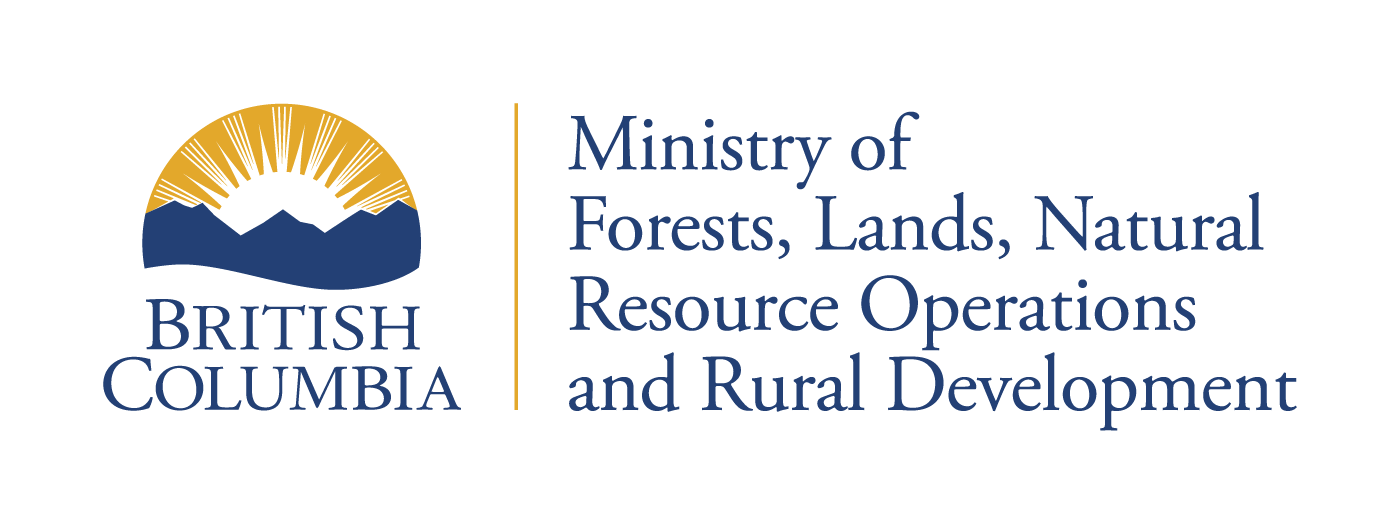Land use changes since European settlers arrived in the Fraser Valley have resulted in the elimination of seasonal marshes and shallow wetlands in the Fraser Valley, with remnant populations of frogs squeezed into agricultural ditches or deeper pools and channels.
The Oregon Spotted Frog is associated with medium to large wetlands, which are shallow, slow moving, and warm. These wetlands also typically have a portion that is permanently wetted and have an abundance of native grasses, sedges, or rushes.
Within these wetlands, a diversity of microhabitats is required depending on life stage, season, and weather conditions. For example, breeding sites tend to be seasonally flooded areas along sun‐exposed sloping benches. Stable water levels are critical for survival of eggs and tadpoles. Fluctuations in water levels can result in leaving the young dry and exposed. Adults are known to take refuge in deep pools during dry periods and burrow into soil or mud along wetland edges, and hide in beaver dams and lodges during cold periods.
Efforts to enhance and restore wetlands occupied by the Oregon Spotted Frog have a positive impact on aquatic plant, invertebrate, and vertebrate populations that live in or visit the wetlands, and benefit other species at risk such as Red-legged Frog, American Bittern, Great Blue Heron, Green Heron, the Salish Sucker, and the Pacific Water Shrew.
